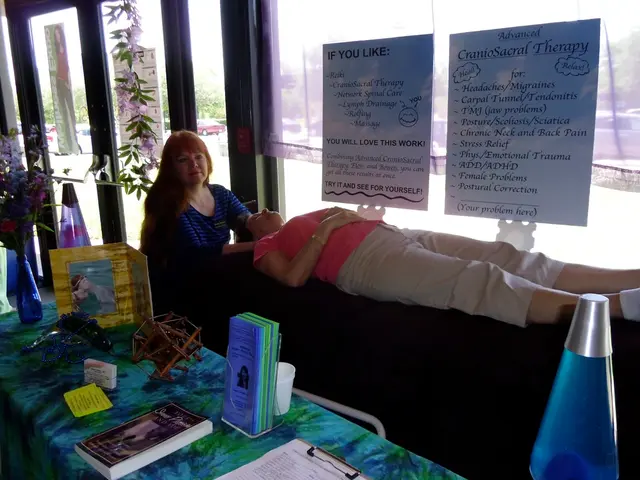Dealing with your ADHD: Decluttering both your mind and space
Managing ADHD: Streamlining Mind and Environment - Decluttering Your Thoughts and Surroundings
Managing ADHD (Attention Deficit Hyperactivity Disorder) can be a challenge, especially in terms of staying organized and tidying up your surroundings. People with ADHD occasionally struggle with focus, time management, and maintaining order, resulting in a messy workspace and a jumbled mind. But understanding ADHD and implementing smart organizational methods can help declutter both your physical space and mind, boosting productivity and overall well-being.
Understanding ADHD
Common symptoms of ADHD include hyperactivity, impulsivity, and inattention. Although often associated with children, ADHD persists into adulthood, impacting various aspects of daily life. Individuals with ADHD may find it tough to prioritize tasks, maintain attention to detail, and follow through on projects. These difficulties can result in disarray, clutter, and an overwhelming feeling.
ADHD and Organization: The Connection
The challenges faced in organizing for people with ADHD stem from differences in brain functioning. Executive functions, vital skills such as planning, organization, and self-regulation, are often affected in ADHD, leading to difficulties managing time, remembering deadlines, and maintaining order in physical spaces. As a result, people with ADHD may struggle with cluttered desks, disorganized schedules, and a sense of being overwhelmed by tasks.
Decluttering Your Mind
Mindfulness
Practice mindfulness techniques like meditation and deep breathing exercises to cultivate your awareness of thoughts and emotions. By consistently practicing mindfulness, you will recognize when your mind is becoming cluttered and refocus your attention on the present moment.
External Aids
External tools like to-do lists, calendars, and reminders can serve as handy organizational aids, helping to keep your thoughts and tasks organized. Digital apps such as Todoist, Trello, or Google Calendar can be particularly helpful for people with ADHD, providing visual cues and reminders to keep you on track.
Breaking Down Tasks
Large tasks can seem overwhelming. Break them down into smaller, more manageable steps and focus on completing one step at a time. This approach prevents feelings of overwhelm and increases a sense of achievement.
Setting Realistic Goals
Setting realistic goals based on your strengths and limitations is essential. Avoid taking on too many tasks or projects, as this can lead to burnout and frustration. Instead, prioritize tasks according to their importance and urgency and celebrate every achievement, no matter how small.
Decluttering Your Space
Designated Areas
Designate specific areas in your home or workspace for different activities, such as work, relaxation, and storage. Set clear boundaries for each area to reduce clutter and create a sense of order.
Implement Systems
Utilize organizational systems like filing systems, storage bins, and shelving units to help keep your environment tidy and uncluttered. Labeling items and containers can make it easier to find what you need and minimize clutter accumulation.
Regular Maintenance
Schedule regular decluttering sessions to maintain order and prevent clutter buildup. Set aside time each week to tidy up, discard unneeded items, and reorganize as necessary.
Minimizing Distractions
Minimize distractions in your environment to maintain focus and concentration. Remove unnecessary items from your workspace, limit noise and visual clutter, and create a tranquil and focused atmosphere for productivity.
In Conclusion
Living with ADHD presents unique challenges in maintaining organization and managing clutter. However, by comprehending the connection between ADHD and organization and implementing effective strategies, it's possible to declutter both your mind and physical space. Through mindfulness, external tools, breaking tasks into manageable steps, and implementing organizational systems, people with ADHD can improve productivity, reduce feelings of overwhelm, and establish a more organized and harmonious environment for themselves. Remember, organizing is a skill that can be developed and perfected with practice and patience.
Enrichment Data: Strategies for Mental and Physical Clutter Management
Mental Clutter
- To-Do List and Scheduling Optimization:
- Create a three-column to-do list to prioritize tasks and manage deadlines[1].
- Schedule extra time for tasks by default to account for potential distractions[1].
- Goal Setting and Intention:
- Clearly define goals and intentions for each task to maintain focus[2].
- Utilize body doubling (working alongside someone) to enhance motivation[2].
- Technology and Tools:
- Utilize project management apps to break down tasks into smaller, manageable steps[5].
- Leverage apps that block distractions or provide reminders to stay on track[5].
Physical Space
- Breaking Down Large Tasks:
- Divide large tasks into smaller ones, such as packing or cleaning, and complete them progressively[2].
- Organizational Systems:
- Experiment with different organizational methods (journals, planners, whiteboards) to find what works best[2].
- Stick with a chosen strategy for about 30 days to establish a routine[2].
- Mindfulness and Breaks:
- Incorporate mindfulness practices like 5-minute breathing exercises to improve focus and reduce mental clutter[5].
Additional Tips
- Create a Quiet Workspace: Provide a quieter space for focused work to reduce distractions[5].
- Flexible Scheduling: Allow flexible hours to accommodate peak productivity periods[5].
- Regular Maintenance: Regularly review and adjust organizational strategies to ensure they remain effective over time.
These strategies can help individuals with ADHD effectively manage their mental and physical clutter, boosting productivity and reducing stress.
- Embracing education-and-self-development strategies can aid in managing mental clutter caused by ADHD. For instance, learning about effective goal-setting and intention-setting techniques (as mentioned under 'Setting Realistic Goals' and 'Goal Setting and Intention') can help improve focus and productivity.
- In terms of physical-health-and-wellness, adopting organizing systems (as detailed under 'Designated Areas', 'Implement Systems', and 'Regular Maintenance') can help declutter and maintain a tidy workspace, promoting personal-growth and fostering a sense of accomplishment.







